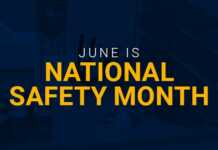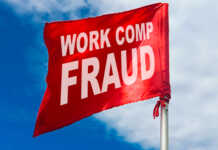According to the U.S. Bureau of Labor Statistics, one worker died every 101 minutes from a work-related injury in 2021. That’s an 8.9 percent increase from 2020. This fatal occupational injury rate represents the highest annual rate since 2016.
Safety signs are tools business owners can use to mitigate risk and protect their biggest asset: their workforce.
The Purpose of Safety Signs
Safety signs are placards placed throughout the workplace to communicate the presence of danger, warn of potential hazards, and provide directional information and other instructions to keep employees safe and injury free. Workplace hazard signs signal employees to take precautions, stay out of restricted areas, and be cautious of potential dangers. They warn of hazards that could harm workers and the public or damage property. Safety signs at work are an easy way to raise awareness and are key to reducing accidents in the workplace.
Who Regulates Safety Signs?
Two organizations play a major role in setting standards for safety sign regulations. The Occupational Safety and Health Administration (OSHA) is an agency of the federal government that creates legally binding standards for health and safety in the workplace. Congress created OSHA to ensure safe and healthful working conditions by setting and enforcing standards and providing training, outreach, education, and assistance. OSHA is responsible for the health and safety of 130 million workers employed at more than 8 million worksites throughout the country.
The American National Standards Institution (ANSI) is a private, non-profit organization made up of volunteers. They work together to create a consensus for voluntary standards agreed upon by manufacturers, engineers, and other industry professionals subject to the standards.
Violating OSHA standards will result in fines and often other, more serious penalties. ANSI standards are voluntary, but OSHA frequently adopts them as regulations. While business owners are not required to adhere to ANSI standards, it’s a good idea to consider doing so. It demonstrates to employees and OSHA that you’re committed to creating a safe work environment.
Types of Workplace Safety Signs
OSHA’s standard (1910.145) regulates safety signs and tags for incident prevention. OSHA names three classifications of safety signs in the workplace: danger, caution, and safety instruction signs. Design elements must be in accordance with ANSI standards. Features like wording, positioning, and color must follow regulations in order to properly communicate potential hazards and ensure worker safety. Note that this standard does not include signs designated for streets, railroads, and highways and does not apply to safety posters, printable safety signs, and safety boards in the workplace.
Danger signs warn of a specific and immediate danger and are reserved for the most severe hazards, where special precautions must be taken. These signs use a combination of red, black, and white and often include the word DANGER displayed prominently across the top. The text is preceded by the safety alert symbol, an exclamation mark inside a triangle.
Caution signs warn against potential hazards. They may notify employees of unsafe practices that could result in minor or moderate injury. These signs must have a yellow background with a black header panel with yellow letters that spell CAUTION. Black text must be used against the portion of the background that is yellow.
Safety instruction signs are used for general instructions and safety procedures or to communicate workplace policies. They must have a white background with a green panel with white letters.
For all three classifications of signs, language is important. Signs must contain sufficient information to be easily understood, and the wording should make a positive, rather than a negative suggestion. Signs should use concise language and be clear and direct, ensuring that anyone who steps foot in the facility will be informed and protected.
According to OSHA, safety signs should always be placed in a position where they are visible from a set distance, in most cases five feet. Signs should be viewable at all times when work is being performed. When a hazard no longer exists, the signs must be removed promptly.
OSHA signs are made of a variety of materials, and their level of durability can be dictated by the conditions surrounding their location. Regardless of location, safety signs must not pose a danger themselves. They must have rounded or blunt corners and be free from sharp edges, splinters, or other sharp projections.
Accident Prevention Tags
OSHA’s standard (1910.145) requires accident prevention tags be used for temporary hazards and to indicate when equipment is broken, out of service, or due for repairs. They are also intended to prevent accidental injury or illness to employees who are exposed to hazardous or potentially hazardous conditions, equipment, or operations that are out of the ordinary, unexpected, or not readily apparent.
Tags must contain a signal word and a message and should be readable at a minimum distance of five feet. The signal word can be Danger, Caution, Biological Hazard, BIOHAZARD, or they may contain the biological hazard symbol. The message indicates the specific hazardous condition or the instruction to be communicated to the employee. It must be presented in pictographs, written text, or both. The signal word and message must be clearly understandable to all employees exposed to the identified hazard.
Danger tags indicate a major hazard that poses an immediate threat of death or serious injury. Caution tags denote a minor hazard situation where a potential hazard or unsafe practice presents a lesser threat of injury. Warning tags represent a hazard level between Caution and Danger. Biological hazard tags are used to identify the actual or potential presence of a biological hazard and to identify anything that contains or is contaminated with hazardous biological agents.
Safety Signs are an Investment in the Health of Your Workforce
The importance of safety signs in the workplace cannot be understated. If hazards are present, safety signs and tags must be posted. It’s a good idea to consider incorporating other signs that may not indicate danger but help contribute to a safe and healthy workplace. These may include notice signs that deliver information about the area, or wayfinding and directional signage.
The specific signs each facility needs depends on the type of business being operated. Be sure to check with your local regulations in addition to OSHA standards as you develop a safety sign policy. It’s important to train employees to recognize safety signs and symbols used throughout the organization to ensure that every employee understands what certain safety symbols and signs mean.
It’s the duty of every business owner to keep visitors and employees informed about any hazards that exist on their premises. Investing in adequate safety signage signals to your employees – and OSHA – that safety is your top priority.

















